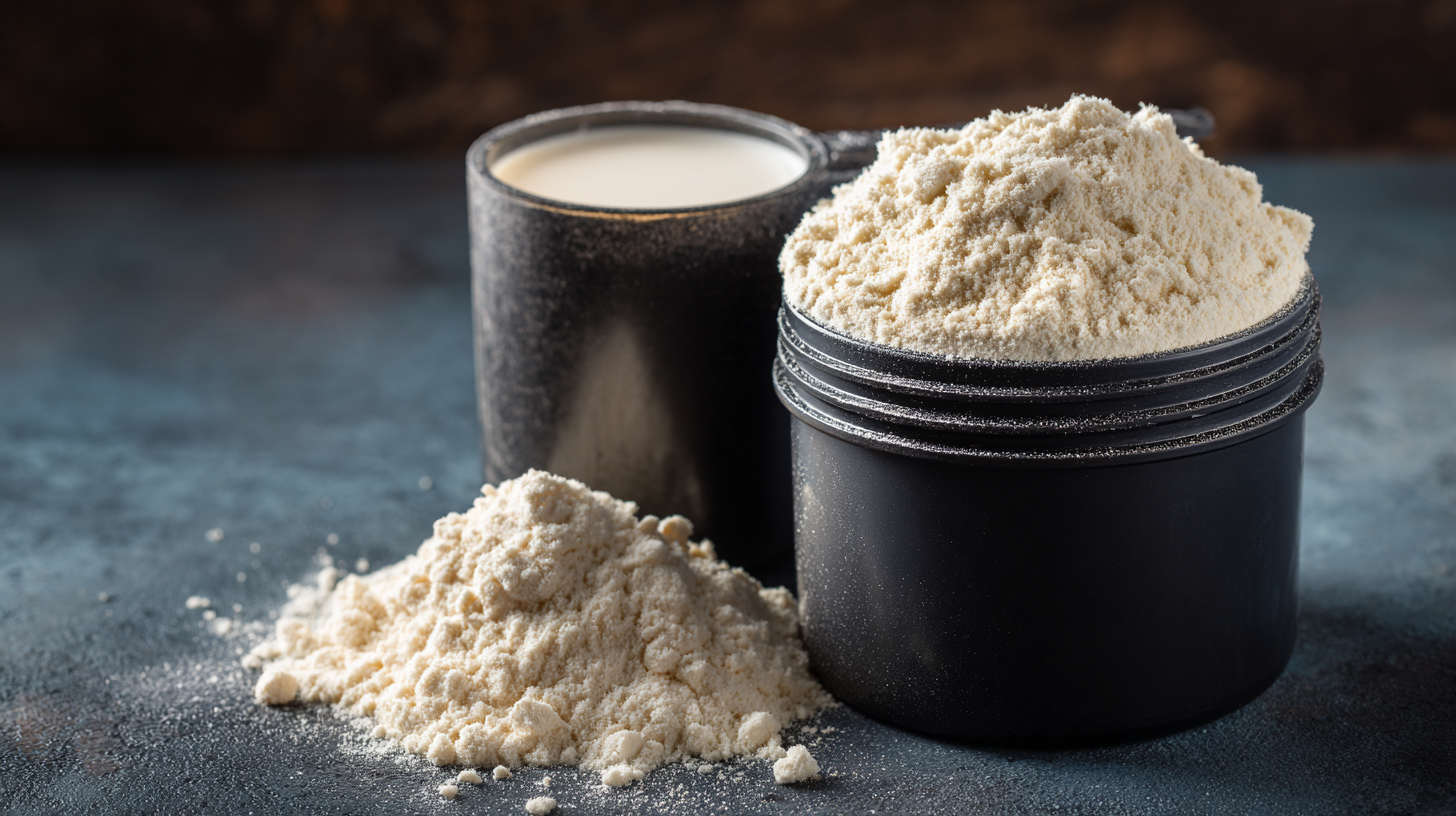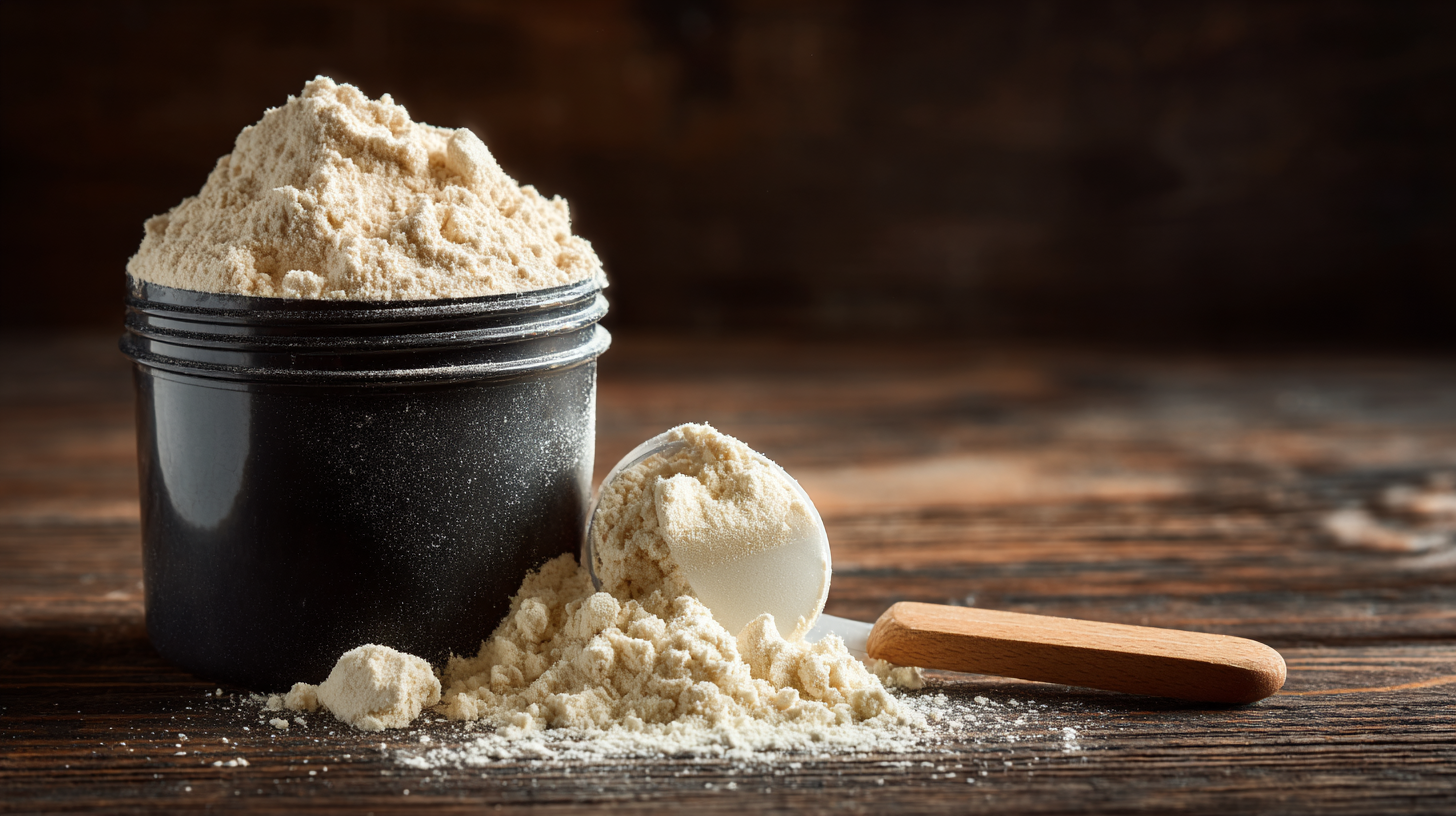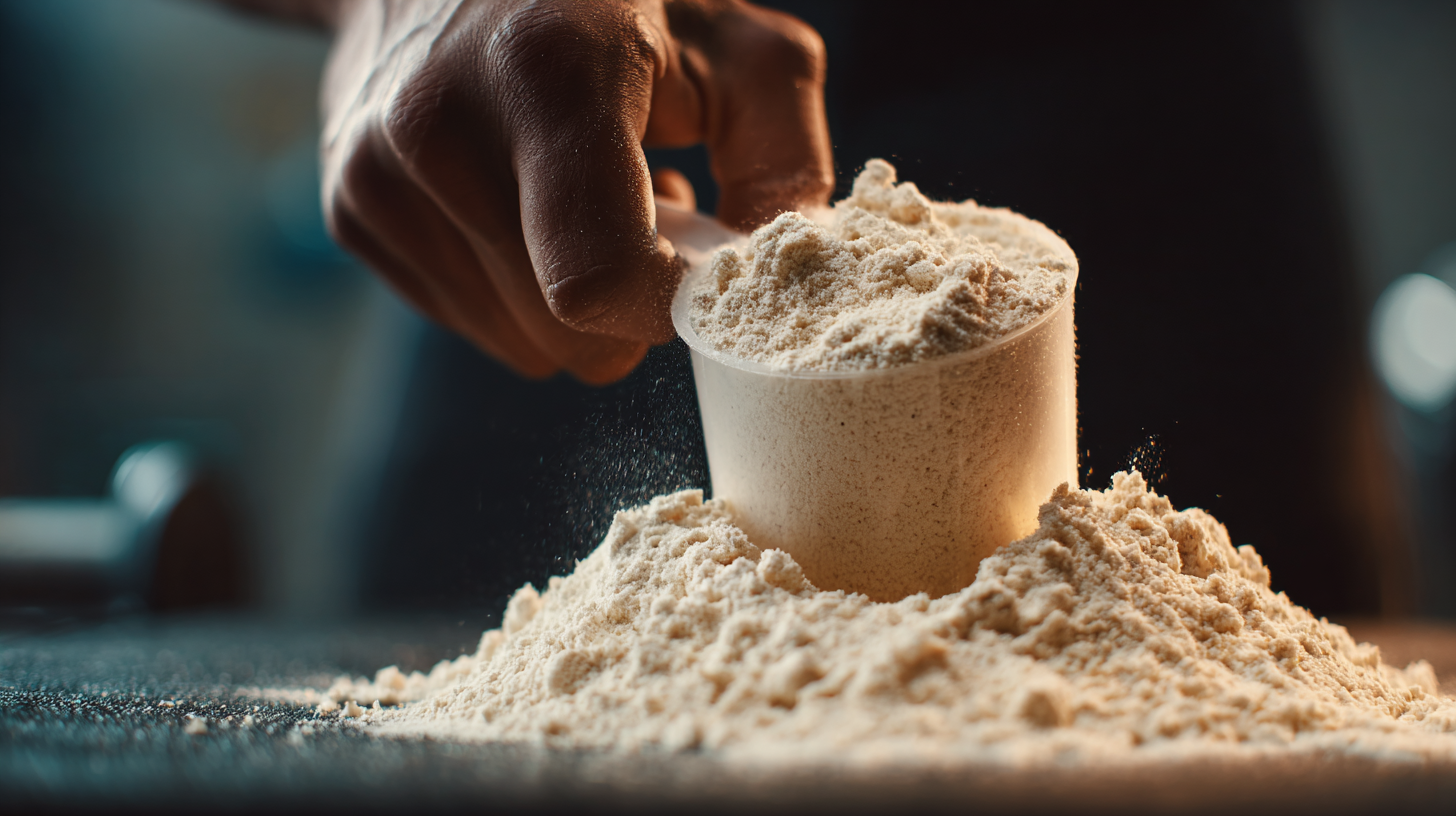The global demand for Milk Protein Powder has surged in recent years, driven by the growing awareness of its benefits in enhancing fitness performance and supporting muscle recovery. According to a report by Research and Markets, the milk protein market is projected to reach USD 20.2 billion by 2025, reflecting an annual growth rate of 6.1%. This rise is attributed to the increasing adoption of protein-rich diets and the rise of fitness enthusiasts among the population. Despite its popularity, there are several issues surrounding the quality and efficacy of milk protein powders that can significantly impact fitness goals. Factors such as ingredient sourcing, processing methods, and authenticity certifications play a critical role in determining the nutritional value and safety of these products. As athletes and consumers become more discerning, understanding these challenges is paramount for anyone looking to optimize their dietary strategies with milk protein powders.

When it comes to achieving fitness goals, the role of high-quality milk protein powders cannot be overstated. These supplements are prized for their complete amino acid profiles, promoting muscle recovery and growth after intense workouts. Among various options, whey protein stands out due to its rapid digestibility and rich content of branched-chain amino acids (BCAAs), which are crucial for muscle protein synthesis. For fitness enthusiasts, selecting a protein powder that encompasses not only high protein content but also essential vitamins and minerals can ultimately enhance overall health and athletic performance.
The growing demand for organic whey protein reflects a shift towards more health-conscious consumer choices. With a projected market size exceeding 18.3 billion USD by 2032 and a robust CAGR of 7.6% from 2025 to 2032, it’s clear that people are increasingly seeking out products that align with their fitness and wellness aspirations. Whether one is a seasoned athlete or a casual gym-goer, understanding the nutritional profiles of various milk protein powders can aid in making informed decisions that support their fitness journeys effectively.
 When considering milk protein powders for optimal muscle recovery, the importance of amino acid composition cannot be overstated. Recent evaluations highlight that whey protein not only contains a higher percentage of essential amino acids (EAAs) compared to casein but also boasts elevated levels of critical BCAAs like leucine and cysteine. These amino acids play a pivotal role in muscle synthesis and recovery, making whey a preferred choice for those aiming to enhance their fitness outcomes.
When considering milk protein powders for optimal muscle recovery, the importance of amino acid composition cannot be overstated. Recent evaluations highlight that whey protein not only contains a higher percentage of essential amino acids (EAAs) compared to casein but also boasts elevated levels of critical BCAAs like leucine and cysteine. These amino acids play a pivotal role in muscle synthesis and recovery, making whey a preferred choice for those aiming to enhance their fitness outcomes.
To maximize recovery, it’s essential to select a protein powder that has a well-rounded amino acid profile. Look for options that provide over 25 grams of protein per serving and ensure a significant contribution of EAAs, particularly after intense workouts.
Tips:
1. Always check the label for the amino acid profile; this will guide you in choosing products with optimal recovery benefits.
2. Timing matters—consuming your protein within 30 minutes post-workout can significantly aid muscle repair.
3. Consider incorporating a mix of both whey and casein to benefit from fast-acting and slow-digesting proteins, optimizing muscle recovery throughout the day.
The demand for premium milk protein powders continues to rise, driven by a growing consumer focus on fitness goals like muscle gain, weight loss, and overall health improvement. According to recent industry analyses, the global protein powder market is expected to grow significantly, with whey and casein protein being among the most sought-after varieties. This shift highlights the increasing preferences among fitness enthusiasts who prioritize high-quality, effective nutritional supplements.
Tips for Brands: To effectively capture this burgeoning market, brands should consider integrating nuts into their protein powder formulations. The nut ingredient market itself is projected to expand, driven by applications in snacks, dairy products, and health-focused confectionery. Nuts like almonds, walnuts, and cashews not only enhance the taste and texture but also boost the nutritional profile, aligning with consumer expectations for healthier, functional food options.
Moreover, as health products trend towards "snackification", brands must adapt their strategies to create grab-and-go formats that cater to time-pressed consumers. By focusing on convenience while ensuring product integrity, brands can strengthen their position in the competitive health food landscape and meet the evolving demands of fitness-oriented consumers.

The quality of milk protein powders significantly influences fitness goals, particularly due to the role of strict manufacturing standards. As the milk protein hydrolysate market is projected to reach $921.2 million in 2023, with a compound annual growth rate of 6.18% from 2024 to 2031, it highlights the growing demand for high-quality protein supplementation among fitness enthusiasts. The importance of adhering to rigorous standards in production cannot be overstated; these standards ensure that the protein content is sufficient and free from contaminants, allowing consumers to effectively meet their nutritional needs.
Recent initiatives, such as the updated group standards for fresh milk released at the 2021 Dairy Industry Summit in China, emphasize the minimum protein and fat content. This development reflects a broader move towards higher quality products to support health and nutritional requirements. In addition, reports like the "Nutrition and Health White Paper for Athletes" provide insights into the future of whey protein, underscoring the necessity for quality assurance in manufacturing to maximize the efficacy of supplements used by active individuals. The focus on quality not only aids personal health goals but also fosters trust in the products consumed by millions.
The fitness industry is experiencing a significant shift towards innovative protein formulations, particularly with the rise of plant-based proteins like pea protein. This new trend aligns with the health-conscious choices of consumers, who increasingly seek alternatives that align with their dietary preferences and fitness goals. Pea protein, in particular, has gained traction among fitness enthusiasts for its high protein content and easy digestibility, making it an excellent choice for both athletes and casual gym-goers alike.
Tips: When incorporating pea protein into your diet, consider blending it with other ingredients in smoothies or baked goods to enhance flavor and nutrition. Additionally, be mindful of portion sizes to ensure you're meeting your protein needs without exceeding calorie limits.
In the pursuit of innovation, the fitness industry is also seeing advancements in milk protein formulations. These innovations aim to boost protein absorption and enhance muscle recovery, appealing to a wider audience beyond just traditional athletes. By utilizing the best of both worlds—plant and dairy-based proteins—consumers are better equipped to meet their fitness aspirations in a more adaptable and personalized way.
Tips: Always check the ingredient list for added sugars and artificial flavors when selecting milk protein powders. This ensures that you are choosing a product that complements your nutrition plan without unnecessary additives.
